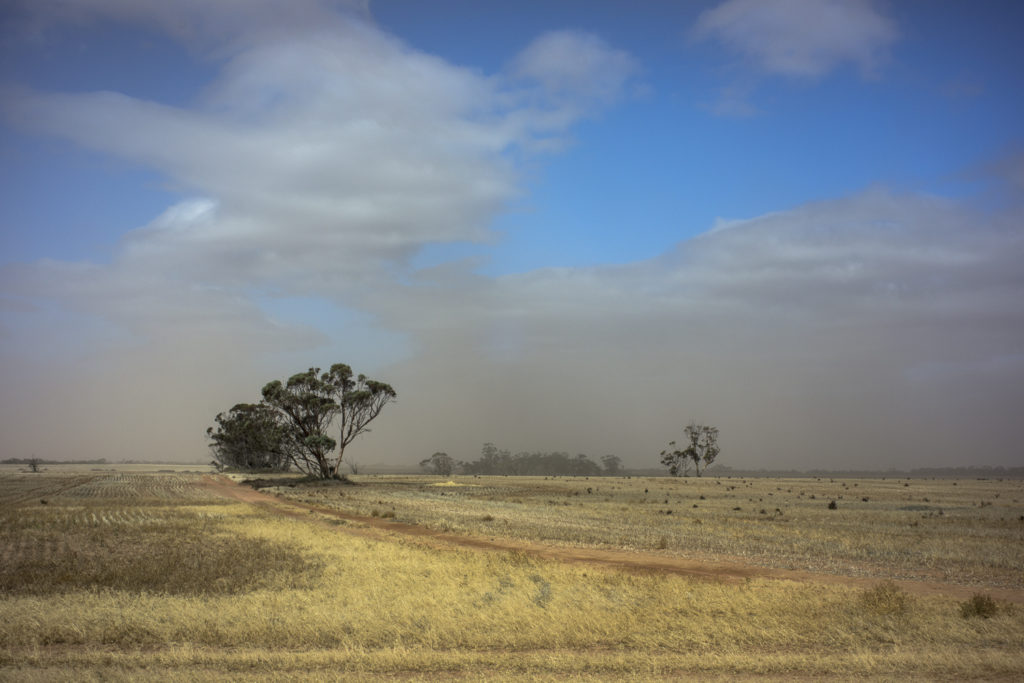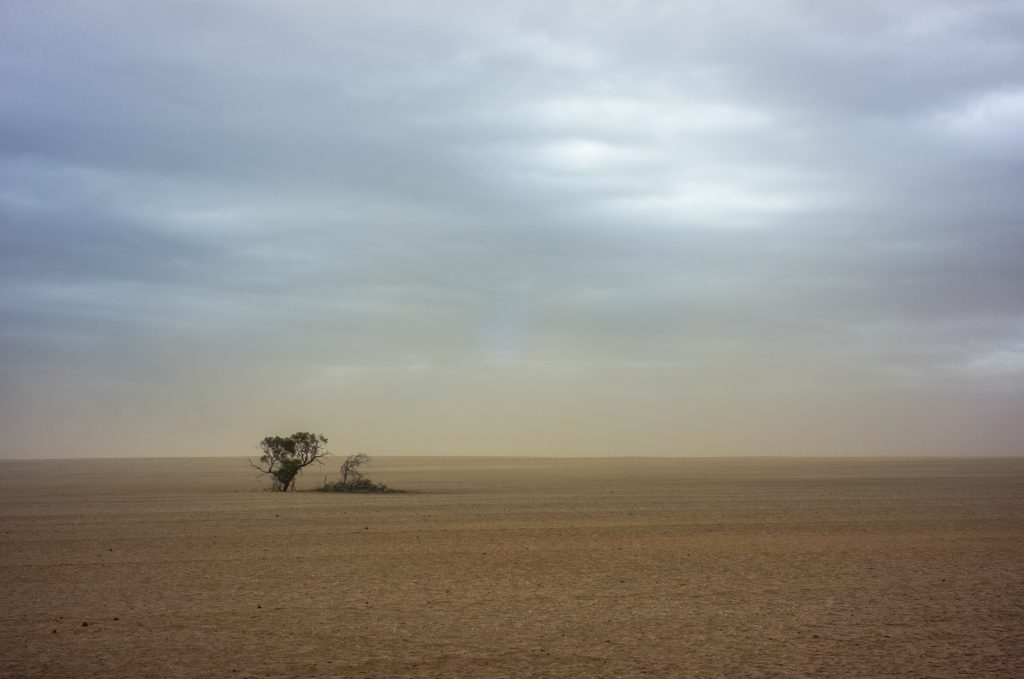In the autumn of 2016 I encountered a dust storm whilst I was camping at Ouyen with Gilbert Roe for several days in order to make some large format, black and white photographs of the silos along the Mallee Highway. These were for the Weltraum exhibition at the Magpie Springs gallery; a group exhibition that was a part of the small 2016 Shimmer Photographic Biennale. This is South Australia’s only photographic biennale, and it is organised and supported by the Onkaparinga Council.
After an early morning silo photoshoot at Galeh I spent the day travelling along the Mallee Highway from Ouyen to Piangil in the Victorian Mallee. Piangil is the northern end point of the Mallee Highway, and it is just south of the Murray Valley Highway, the River Murray, and Tooleybuc in NSW. Whilst returning to the Ouyen camp around lunch time I encountered a dust storm sweeping across the sun drenched agricultural landscape from the south west.
I stopped along the highway and took a number of snaps of the dust storm with my digital camera. This is one of them: 
I didn’t dare use my large format cameras to photograph the dust storm because the swirling dust was too great and the wind was far too strong. The dust storm gave way to rain that night and to overcast conditions the next day. Normally, it is very bright and sunny in the Mallee. The dry, flat landscape is sun drenched.
Though I’d driven along this part of the Mallee Highway on my trips to and from Canberra, I couldn’t really remember what there was in this landscape. The landscape all looks the same—-excessively cleared—- when you are driving through it at a 100 kilometres an hour. So I needed to scope the silos along the northern Victorian section of the Mallee Highway to see what was there. It is the excessive clearing of the Mallee that causes the dust storms.
There weren’t many silos on the Ouyen to Piangil part of the highway so the dust storm sweeping across the landscape provided me with a way to start photographing The Mallee, rather than just the concrete silos in the landscape:

When I was looking over the images on the computer screen back at Encounter Studio in Victor Harbor I could see was the snaps that I’d taken on the Ouyen photo trip put photographing the silos into perspective. It was a self-contained project—eg., 15 Silos along the Mallee Highway. The snaps I’d taken enabled me to see that The Mallee was an interesting place in terms of both past and present and what was visible and what was invisible. Whilst reviewing the images of dust storm on the computer screen I recalled the way that the Mallee is conventionally understood in negative terms in our culture: as ugly, grey scrub; as dry, flat and monotonous; the country lacks any aesthetic value; it was akin to a desert with frequent drought and terrible dust storms; and people were crazy to live there.
These snaps from the Ouyen photo trip gave rise to the idea of doing a Mallee project. I mentioned the idea to Gilbert Roe and he was keen and I recalled seeing photographs of scoreboards as well as rural towns and agricultural landscapes in South Australia by Eric Algra. Gilbert contacted Eric who was keen to come on board. Eric mentioned that he had an archive of Mallee images from his black and white film days, and so the Mallee Routes project was born. What was not discussed at an initial meeting was the structure of the project: would it be a basic travel narrative that documents the travelling photographer’s visual impressions of what they had seen in their journey into the unknown?
What was agreed was that photography is an act of seeing or looking toward the empirical realm. It doesn’t merely register or reproduce the world by lifting the illusory curtain to say this is how it is: photography is an aesthetic project creates its readings or interpretations of the Mallee in close proximity to this world, by closely adhering to visible details. This topos of seeing in the realist tradition presupposes the photographer –the authorial subject–as the subject of visual perception; the viewer of the image is neutral, detached and contemplative; and a world of objects that can be ‘seen’.

